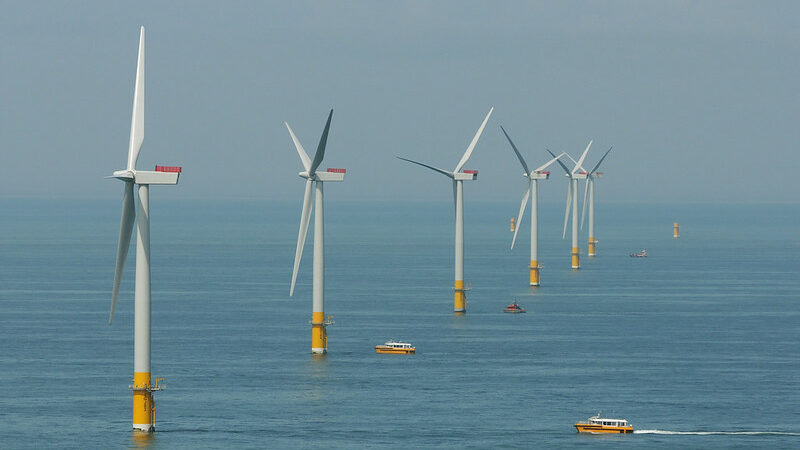Covid-19 recovery spending offers a golden opportunity to accelerate the transition from fossil fuels to clean energy while ensuring no one gets left behind.
This is the major finding from a recently published report which offers a system aimed at helping world governments design processes and define roadmaps to accelerate the energy transition.
The report, written by the Global Subsidies Initiative (GSI) at the International Institute for Sustainable Development (IISD), also encourages policymakers to take immediate action and suggests that decisions made now will prove vital in the years ahead.
“Since the beginning of the pandemic, governments pledged hundreds of billions of dollars to fossil fuel-intensive sectors putting climate commitments on the backburner,” said Paulina Resich, senior communications officer for IISD’s energy team.
“Our work shows how to get back on track to limit global warming to 1.5C and align economic recovery with a just transition to clean and sustainable economies,” she added.
The report takes the form of a five-step blueprint, with each principle building on the previous. This is what it suggests.
1) Divest from fossil fuel production
As of September 2021, G20 and 11 other governments have committed to over $350 billion to support fossil fuels, in addition to the over $800 billion already spent annually. Financing support is seen through direct budgetary transfers, tax expenditures, public finance, state-owned enterprise investments and more and completely swamps spending commitments for clean and renewable energies.
Instead, recovery packages should be centred around a low-carbon future, meaning more support to clean energy and incentivising a just transition away from fossil-fuel intensive sectors.
Directing spending towards the latter also gives the wrong signals to the market and, perhaps more importantly, preserves the idea that the main driver of our economies is the fossil fuel industry.
2) Reform subsidies
Fossil fuel subsidy reform and taxation can raise – and unlock – at least $553 billion globally per year, which can significantly help to bolster post-pandemic recovery efforts and a transition to net zero.
“Raising fossil fuel prices is a great way for governments to generate funds for the pandemic response as long as some of the revenues are used to boost incomes for the poor,” said Tara Laan, report author and senior associate at IISD, arguing that the approach “has the double benefit of encouraging consumers and investors to switch to cleaner energy and transport alternatives.”
“The solution to a fossil fuel recovery doesn’t need to be complicated: just gradually increase taxes on fossil fuels and use the revenues for more productive purposes, including helping the vulnerable,” she added.
3) Support clean energy
Money raised from FFSR and taxation can be funnelled or “swapped” into clean energy, energy efficiency, energy access, and the decarbonisation of transport – pressing areas to target and achieve Sustainable Development Goals and net-zero commitments.
These changes often demand high upfront costs, such as improving HVAC in buildings or developing electric road and rail infrastructure, and a swap from fossil fuels will help overcome this barrier, as well as ensure alignment between fiscal and energy policies and environmental and social priorities.
4) Incentivise clean electricity
To move towards electricity, the International Energy Agency suggest that around 70% of all investments are expected to be provided by private sources, and thus incentivisation and leverage needs to come from the top.
“Clean electricity is going to be the backbone of the energy transition but it will need major investment and it’s up to governments to make sure this investment flows into clean energy,” said Anna Geddes, report author and IISD associate.
“Governments can help re-direct investments to clean electricity by providing well-targeted subsidies and policies and making public finance institutions and state-owned enterprises key agents of change for achieving net-zero,” she added.
5) Ensure a just transition
While the energy transition is inevitable, governments must carefully plan for it to mitigate any economic, social and environmental risks, and take a negotiated approach based on social dialogue between themselves, workers, employers, and stakeholders.
“For any recovery to be just you have to make sure that social partners all have an equal role in policy design and that this is coupled with meaningful stakeholder engagement where communities who are affected are part of the process, have their voices heard, and their issues and concerns are addressed fairly,” said Philip Gass, report author and IISD lead for transitions in its energy programme.
Ultimately, these principles are individual pieces of a larger puzzle, where all five must be adopted in a multidisciplinary system.
“Fossil-free recovery needs strategic thinking and planning as well as consistent and coordinated action,” concluded Lourdes Sanchez, report lead and IISD senior policy advisor.
“There is an urgency to act and direct limited financial resources to the areas that will support the energy transition while creating jobs and fostering sustainable economic and social development.”
Find out more in the report “Achieving a fossil-free recovery”.
Listen to the podcast “How to achieve a fossil-free recovery”.
This post was sponsored by the International Institute for Sustainable Development. See our editorial guidelines for what this means.
